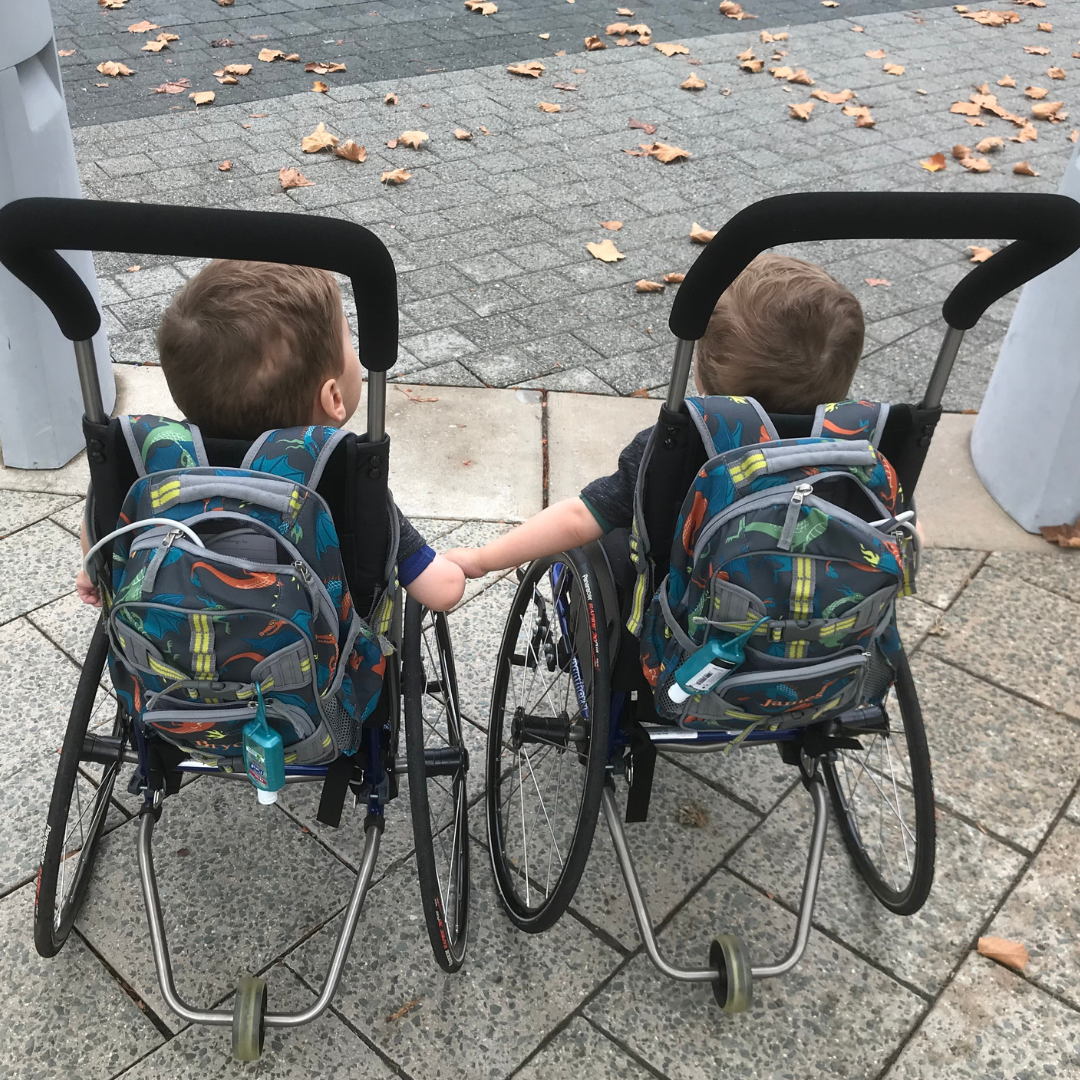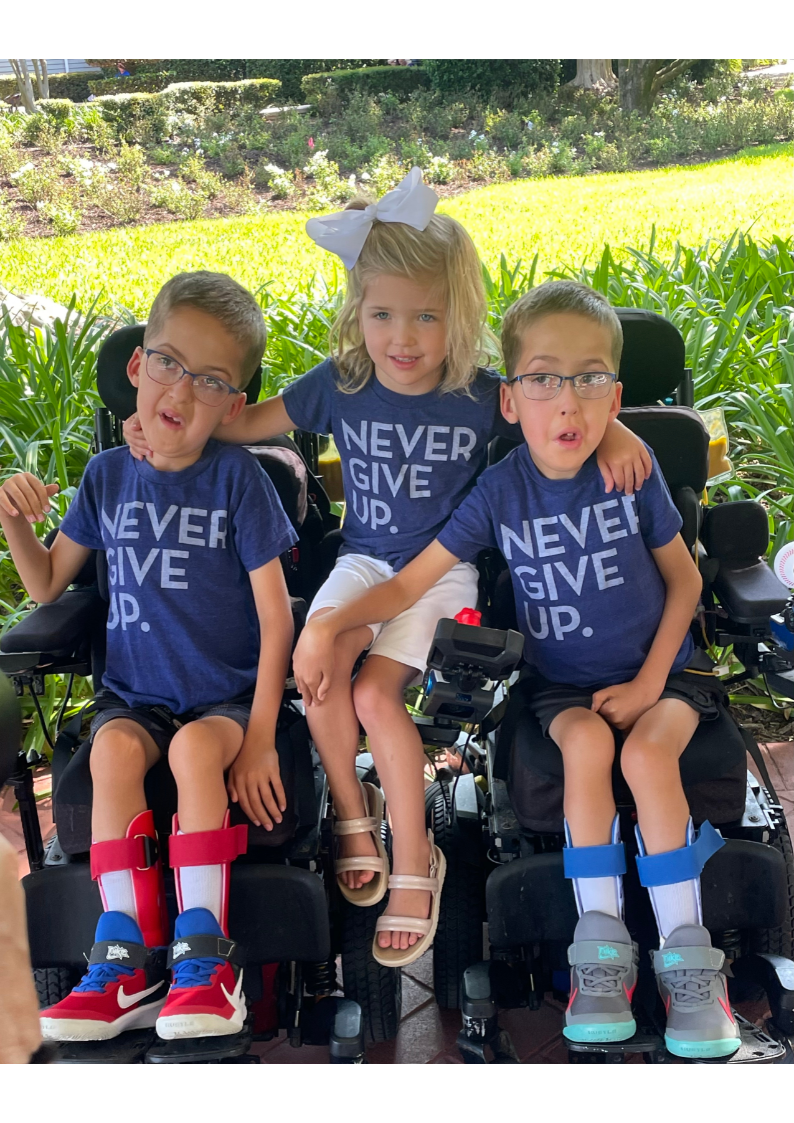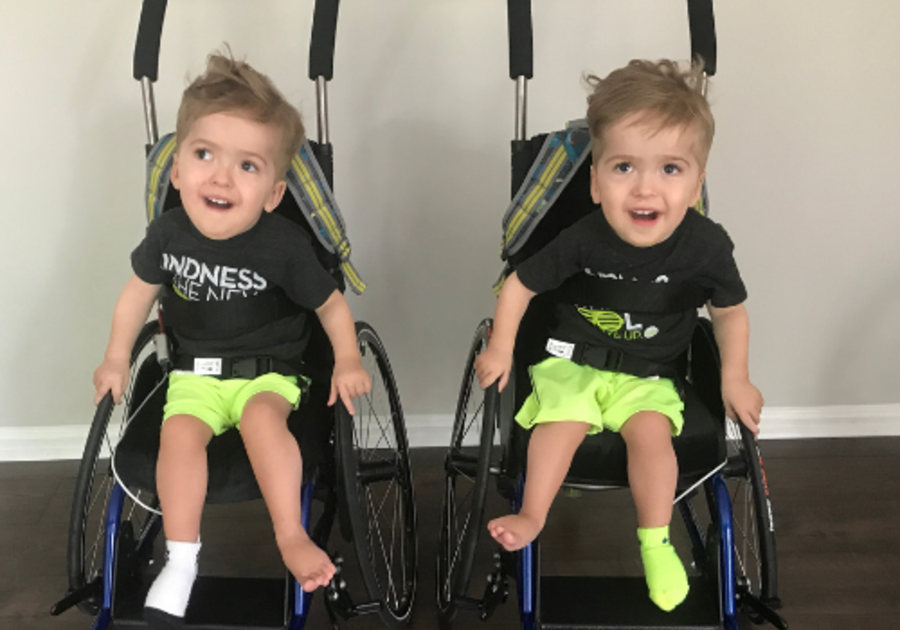August is SMA Awareness Month. If you’re anything like I was 7 years ago, you’re probably thinking what is SMA? SMA stands for Spinal Muscular Atrophy. Ok, but what is SMA right? In short, SMA is a progressive neurodegenerative disease that affects the motor nerve cells in the spinal cord and impacts the muscles used for activities such as breathing, eating, crawling, and walking.
Approximately, 7.5 years ago I heard the words SMA for the first time, only it wasn’t because I was reading about it in a newsletter looking for my family fun. I first heard it from a neurologist, while she explained with a fair amount of confidence that's why my 6-month-old twins, Bryce and James, were missing developmental milestones.
I first noticed the boys weren’t developing like their peers. They really struggled with tummy time, they never picked their heads up or tried to come up on their elbows. I spent many sleepless nights googling and researching to figure out what was happening with the twins. When I brought these concerns up to a pediatrician, I was quieted with excuses like they were twins, boys, and a few weeks early. I was told they would catch up. But I knew there was something more. All those nights researching what could be “wrong” came to an end once I found out what SMA was, the boys checked every box.
The medical jargon to explain SMA is that: SMA is caused by a mutation in the survival motor neuron gene 1 (SMN1). In a healthy person, this gene produces a protein that is critical to the function of the nerves that control our muscles. Individuals with SMA produce low levels of survival motor neuron (SMN) protein. Without this protein, those nerve cells cannot properly function and eventually die, leading to debilitating and sometimes fatal muscle weakness. (curesma.org)
 |
SMA affects approximately one in 11,000 births in the U.S., and about one in every 50 Americans is a genetic carrier. SMA can affect any race or gender. SMA is often to compared to ALS in infants, much like ALS the body will have severe disabilities while the mind remains unaffected. Cognitively those with SMA have normal to high intelligence.
When my boys were first diagnosed, SMA did not have any treatment options. We were told it was unlikely that the boys would survive to live to the age of two. If they did they would have a trach and be dependent on a ventilator to breathe for them. By this point, they likely would only have movement in their fingers left.
Fortunately, for Bryce and James, there was a very promising clinical trial available and the boys were able to receive a life-saving drug. The boys began to make progress instead of losing their abilities. To date, there are 3 approved treatments for SMA. It brings me so much joy to know that parents of children newly diagnosed with SMA are no longer handed a death sentence and instead handed a future filled with hope.
 |
Even though the boys received treatment at a young age, SMA had already started its attack on their bodies. The boys lost their swallow just before their first birthday and require a suction machine, a cough assist, and bipap at night to help their breathing. The boys also use power and manual wheelchairs, they require full assistance with transfers everywhere they go.
Their days are filled with lots of appointments, therapy, breathing treatments, and stretching on top of typically developing 7-year-old stuff like school, playtime, video games and friends. Every day is hard and exhausting, but balanced with so much joy! No one is promised tomorrow, but 7.5 years ago I was barely promised another year and a half and instead, I’ve had the gift of almost 8 years with two of the greatest kids.
To learn more about SMA or get involved, check out curesma.org and fightingforkaiden.org
 |



